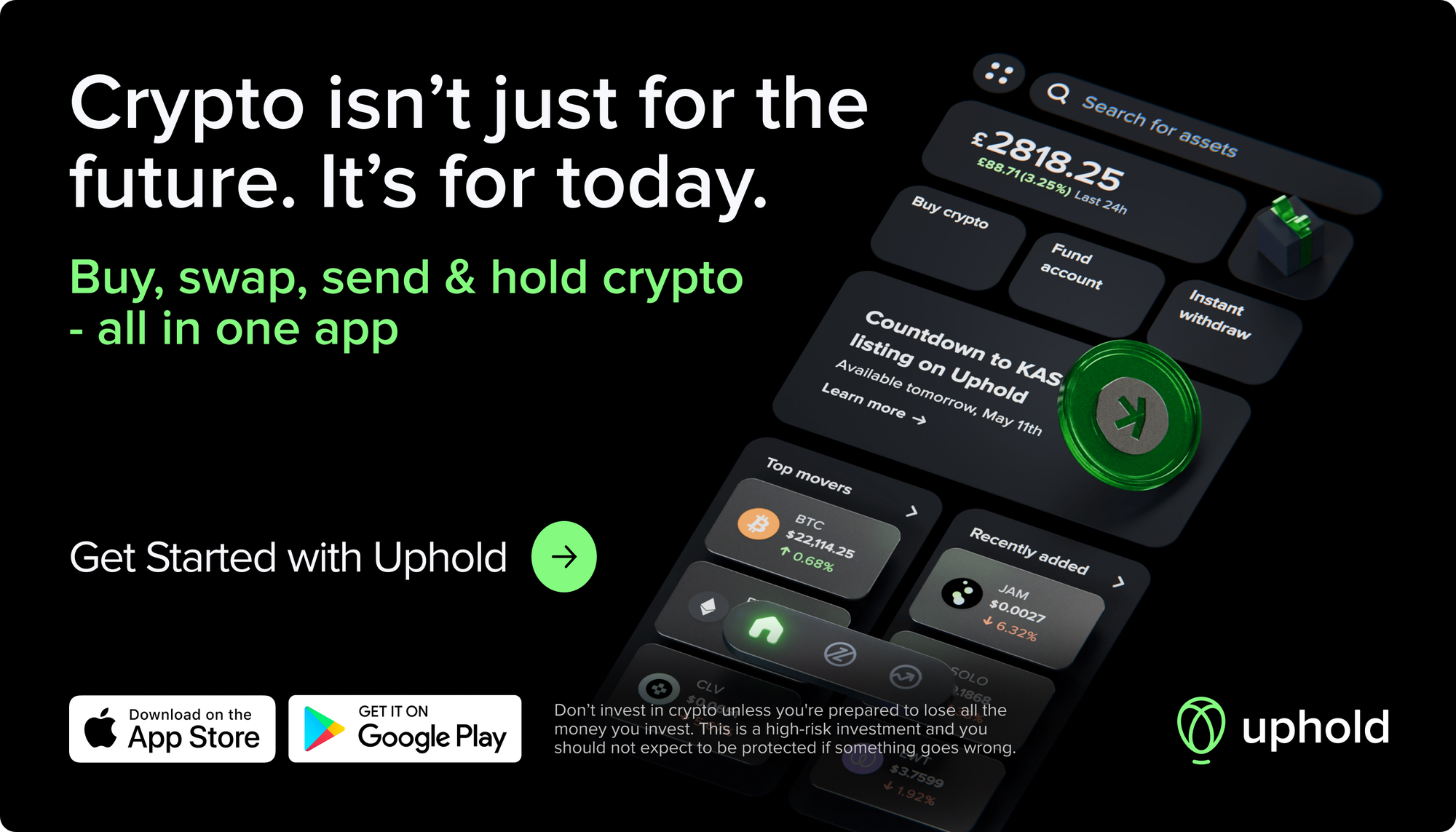Vitalik's New Virtual Machine


View in Browser
Sponsor: Uphold — Buy, swap & hold 300+ crypto. Capital at risk.

- 🪂 Zora Plans Airdrop After Weekend of 'Content Coin' Chatter. The Coinbase-backed project has been catching eyeballs (and critiques) after several days of promotion by Base ecosystem lead Jesse Pollak.
- 💰 Strategy Buys $555M in BTC. Michael Saylor's latest weekly buy takes Strategy's total holdings to 538,200 BTC.
- 🌎 Circle Launching New Payments Network for Banks. Circle unveiled a new payments and cross-border remittance product.
| Prices as of 6pm ET | 24hr | 7d |

|
Crypto $2.72T | ↗ 1.7% | ↗ 1.5% |

|
BTC $87,059 | ↗ 2.7% | ↗ 2.9% |

|
ETH $1,577 | ↘ 0.1% | ↘ 2.8% |

Vitalik has some bold new ideas for the future of Ethereum.
With Ethereum gas prices reaching historic lows after falling to mere fractions of a “gwei” for computation fees, L1 transactions can currently be completed for pennies. As a result, many onchain users have started questioning why they ever left the L1 in the first place, and with ETH price simultaneously underperforming relative to the monolithic competition, doubts are looming larger than ever about the viability of a “rollup-centric” roadmap.
In recent days, Ethereum leadership has started voicing support for a strategic pivot that would refocus development efforts back towards L1. Piggybacking on the momentum, over the weekend, Vitalik proposed a radical solution to make base layer scalability a reality: abandoning the EVM!
Today, we’re exploring how switching to RISC-V could help Ethereum regain its crown as crypto’s leading smart contract platform. 👇
❓ What is Vitalik Proposing?
Ethereum co-founder Vitalik Buterin wants to increase transaction speeds and lower costs on the Ethereum L1 by replacing the Ethereum Virtual Machine (EVM) with RISC-V, thereby changing the virtual machine language used to write smart contracts.
Although a total redesign of Ethereum’s smart contract logic is no doubt radical, according to Buterin’s blog post in the Ethereum Magicians forum, these changes would address existing L1 scalability issues by eliminating unnecessary computation, all while retaining backwards compatibility with legacy EVM programs.
Vitalik’s proposal echoes Justin Drake’s “Beam Chain” vision for simplifying Ethereum’s consensus, and just as Beam Chain seeks to streamline Ethereum consensus, a RISC-V execution layer would simplify and scale execution, potentially resulting in 100x efficiency gains.

💻 What is RISC-V?
RISC-V (pronounced “risk five”) is an open-source “reduced instruction set computer” (RISC) architecture that can serve as a modular blueprint for building virtual machines.
Somewhat like the Linux operating system of computer hardware, RISC-V has already been integrated by numerous top-tier chip manufacturing companies, including Intel and Arm, as their programming backbone of choice for CPUs.
When used in the context of a blockchain-based virtual machine, RISC-V is positioned as enjoying many advantages over the EVM, such as:
- Better performance for zero-knowledge proving
- Superior support from existing code compilers and tooling
- Generic backend that can support alternative coding languages, like Solana’s Rust and Sui’s MOVE
wtf is risc-v and why are crypto nerds talking about it?
— binji (@binji_x) April 21, 2025
here’s an explainer in plain english ↓ pic.twitter.com/HjUZEDLTHY
✈️ Why Abandon the EVM?
The EVM has served Ethereum dutifully since the network’s inception, but it has become a cumbersome bottleneck to recent scaling ambitions. Before the L1 can be future-proofed with zero-knowledge proofs, a complete overhaul may be necessary…
Many in-production ZK-EVMs – like Polygon Miden, Succinct SP1, Risc Zero RISC0 – already compile EVM bytecode down to RISC-V under the hood; giving developers direct access to the standard would yield dividends by further reducing proving times and enhancing coding language flexibility.
Additionally, removing deeply ingrained EVM technical debt, like the smart contract deletion “SELFDESTRUCT” functionality, may require switching to a new virtual machine.
Implementing a ZK-ready backend appears to be the best solution to simplify Ethereum’s execution layer, and when coupled with the ability to support more coding languages, the switch to RISC-V stands to be a paradigm shift that establishes Ethereum as a clear leader in next-generation blockchain technology.
New @VitalikButerin blog post on replacing the EVM with RISC-V in the long-term.
— Uma Roy (@pumatheuma) April 20, 2025
I am a huge fan of this direction for Ethereum's execution layer.
Today, RISC-V zkVMs like SP1 are the clear endgame solution for "ZK-ifying" Ethereum and quickly becoming the de-facto solution for… pic.twitter.com/yFBojIheqC

Explore +300 assets on Uphold. Trade, swap & hold — all in one place. In the US? Earn rewards, including rewards on stablecoins, exclusive insights, and early token access—just by staying active. Terms apply. Don’t invest unless you’re prepared to lose all the money you invest.
